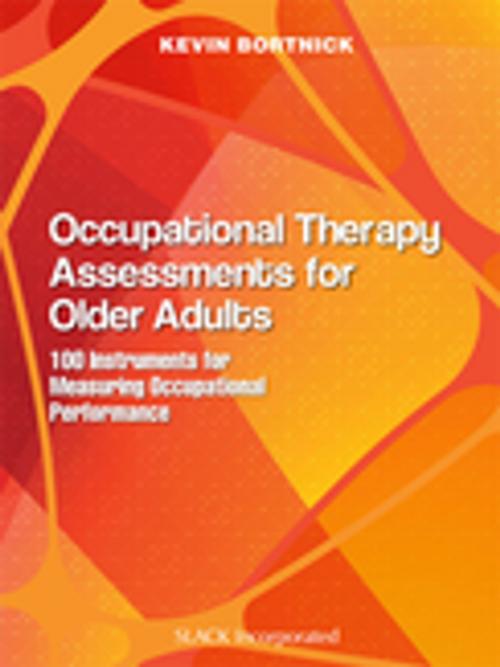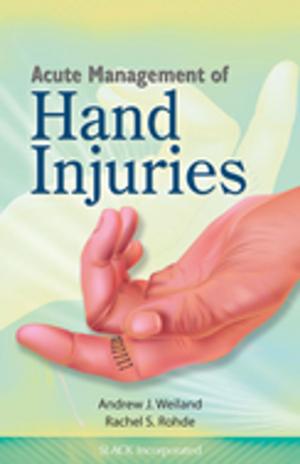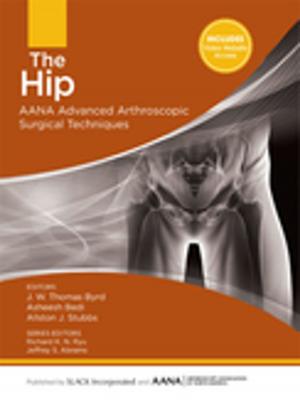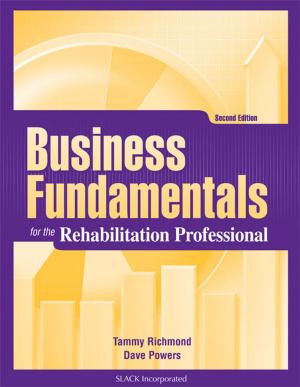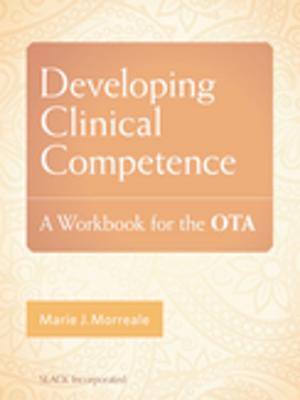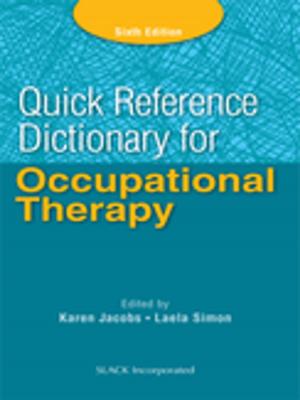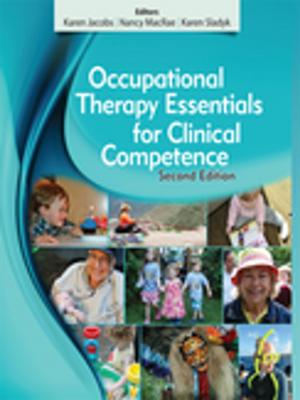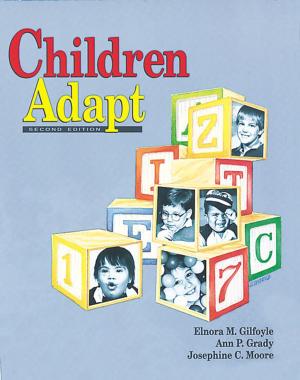Occupational Therapy Assessment for Older Adults
100 Instruments for Measuring Occupational Performance
Nonfiction, Health & Well Being, Medical, Allied Health Services, Occupational Therapy| Author: | ISBN: | 9781630913595 | |
| Publisher: | SLACK Incorporated | Publication: | December 15, 2016 |
| Imprint: | SLACK Incorporated | Language: | English |
| Author: | |
| ISBN: | 9781630913595 |
| Publisher: | SLACK Incorporated |
| Publication: | December 15, 2016 |
| Imprint: | SLACK Incorporated |
| Language: | English |
The role of measurement and the benefits of outcome measures are defined as important tools used to document change in one or more constructs over time, help to describe a client’s condition, formulate a prognosis, as well as to evaluate the effects of occupational therapy intervention. Occupational Therapy Assessments for Older Adults: 100 Instruments for Measuring Occupational Performance presents over 100 outcome measures in the form of vignettes that encompass a brief description of each instrument, a review of its psychometric properties, its advantages and disadvantages, administration procedures, permissions to use, author contact information, as well as where and how to procure the instrument. Occupational Therapy Assessments for Older Adults by Dr. Kevin Bortnick narrows down the list of possible choices for the occupational therapy student or clinician to only those with an amount of peer review, bibliographic citations, as well as acceptance within the profession. The text also includes research-based information with text citations and has over 100 tables, diagrams, and figures. Included in the review of each outcome measure: • Description: A brief record of the measure. • Psychometrics: A review of the level of research evidence that either supports or does not support the instrument, including such items as inter-rater, intra-rater, and test-retest reliabilities, as well as internal consistencies and construct validities among others. • Advantages: Synopsis of the benefits of using the measure over others including its unique attributes. • Disadvantages: A summary of its faults. For example, the amount of research evidence may be limited or the measure may be expensive. • Administration: Information regarding how to administer, score, and interpret results. • Permissions: How and where to procure the instrument, such as websites where it may be purchased or journal articles or publications that may contain the scale. • Summary: A brief summation of important information. Occupational Therapy Assessments for Older Adults: 100 Instruments for Measuring Occupational Performance encourages occupational therapy and occupational therapy assistants to expand their thinking about the use of appropriate outcome measures with older adult populations. Using the appropriate outcome measure based on evidence can aid in the promotion of health, well-being, and participation of clients.
The role of measurement and the benefits of outcome measures are defined as important tools used to document change in one or more constructs over time, help to describe a client’s condition, formulate a prognosis, as well as to evaluate the effects of occupational therapy intervention. Occupational Therapy Assessments for Older Adults: 100 Instruments for Measuring Occupational Performance presents over 100 outcome measures in the form of vignettes that encompass a brief description of each instrument, a review of its psychometric properties, its advantages and disadvantages, administration procedures, permissions to use, author contact information, as well as where and how to procure the instrument. Occupational Therapy Assessments for Older Adults by Dr. Kevin Bortnick narrows down the list of possible choices for the occupational therapy student or clinician to only those with an amount of peer review, bibliographic citations, as well as acceptance within the profession. The text also includes research-based information with text citations and has over 100 tables, diagrams, and figures. Included in the review of each outcome measure: • Description: A brief record of the measure. • Psychometrics: A review of the level of research evidence that either supports or does not support the instrument, including such items as inter-rater, intra-rater, and test-retest reliabilities, as well as internal consistencies and construct validities among others. • Advantages: Synopsis of the benefits of using the measure over others including its unique attributes. • Disadvantages: A summary of its faults. For example, the amount of research evidence may be limited or the measure may be expensive. • Administration: Information regarding how to administer, score, and interpret results. • Permissions: How and where to procure the instrument, such as websites where it may be purchased or journal articles or publications that may contain the scale. • Summary: A brief summation of important information. Occupational Therapy Assessments for Older Adults: 100 Instruments for Measuring Occupational Performance encourages occupational therapy and occupational therapy assistants to expand their thinking about the use of appropriate outcome measures with older adult populations. Using the appropriate outcome measure based on evidence can aid in the promotion of health, well-being, and participation of clients.
